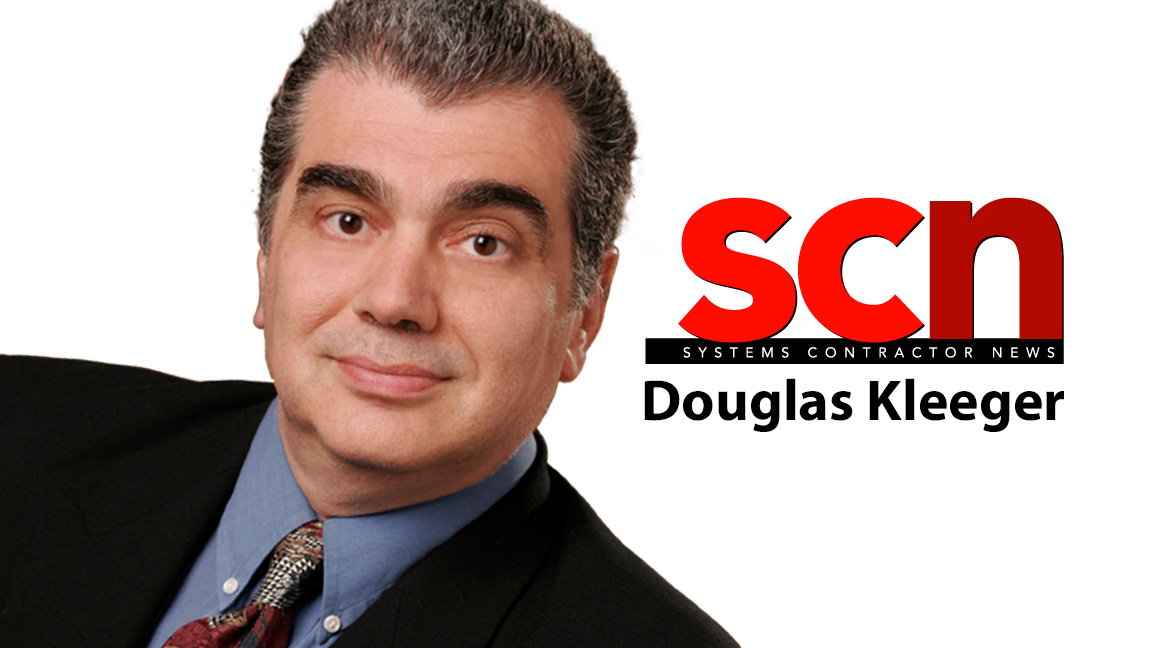Beyond the Tech: The Cost of Doing Business
How can you make sure your equipment markups are fair?

I recently had a discussion with a colleague about the topic of equipment markup related to what is—dare I say the word—fair. What is the correct margin for marking up equipment that you sell to your clients? If something costs $100, do you sell it for $150, $250, $1,000? Are there any limits? Is being fair a part of business?
[Beyond the Tech: Get That Deposit!]
I remember walking a house on Long Island in the 1980s. It was on the bay and worth more than $1 million. Back then, I did a lot of residential work mixed with commercial. I was there with another integrator I was partnering with on some projects. This was a referral from one of his clients, so he was the lead. I watched and listened.
There was a room where he suggested ceiling loudspeakers. These were typical, coaxial Quam 8-inch speakers. They cost about $20 each, with good sound but not high end. They walked the room, he gave his thoughts on quantity and placement, and they decided on two.
I believe that you don't charge whatever you can because you can.
When the client asked about pricing, the integrator said about $750 each, which did not include installation. The client didn't flinch—I did, on the inside—and we moved to the next room.
At that time, I was charging $75 for the same loudspeaker, including installation. I felt that was fair. To me, charging $750 for a $20 loudspeaker was nothing short of unethical. What do you think?
On a side note, that should have been a red flag for me as to this guy’s business ethic. Later, I did a church project with him. I was able to get $15,000 worth of equipment on my credit line. After we finished the job, I kept asking when I would get paid (for the equipment and my labor). After a few months, I finally went to meet with the pastor, and it turned out he had paid the other integrator months ago. I got stuck with the entire bill. Ouch.
A daily selection of the top stories for AV integrators, resellers and consultants. Sign up below.
Price Sheets and Probable Cost
Here is another example. While working as an AV consultant for a firm that also did security, a visiting rep was explaining why we should specify their products. After his presentation, I asked for him to send me their dealer price sheet, just like I did with all manufacturers. He looked at me like I had three heads and refused. When I asked how I could specify a product when I didn't know the cost, and further explained that I could just use another manufacturer, he went to my boss and complained.
[On Your Business: Reevaluate Your Employee Evaluations]
Having been an integrator for many years, when I did a cost workup for a project, I used dealer prices. Back then, and even now, many consultants don’t bother with cost pricing; they use list price for their estimate of probable cost for a project. It’s quicker, but I found that method to be highly inaccurate.

I would look at each section of my cost workup, such as audio, video, control, infrastructure, etc. For each item, I would put a markup, say, 20%, 35%, 50%, etc. This way, I could have different markups for different sections, even different markups in the same section, and an overall markup for the entire project.
This takes more time, but it's more accurate—and I like more accurate. In fact, on a more than $1 million courthouse project I did using this method, the mid-level bid was within $35,000 of my estimate of probable cost. Pretty good work, if I say so myself.
I never did get the cost of the security equipment, but not long after, I had an issue with my garage door and security system. I needed a new sensor at the top of the door. I called my security contractor; they said $75 for the part, plus $75 for the install and connection to my system.
On a whim, I called the alarm distributor we worked with and asked if I could buy the part from him. It cost me $8. My first thought was wondering if I was in the wrong business. Systems contractors fight to the death over a couple of points, while this neighboring industry gets an 850% markup without question? Hmm.
Meanwhile, on the opposite side of the spectrum, when I was the regional engineer for XeroxAV, I can remember a proposal for some education work. The county demanded that if we bid on the project, we had to provide our dealer cost for every item and then mark it up 8%.
Avoid Itemized Listings
We are all over the place here, from 8% to 850% markup. What is fair to charge a customer? Here is what I do (and recommend) for current AV clients. When I work with an integrator and price projects out, we start at 50% on equipment and 100% on labor cost, and adjust accordingly to the particular client and project.
How can I do that, you may ask. After all, the displays are at Best Buy for 30% less. I can do this because the proposals I write do not have line itemized equipment listings or prices. I have a section I call “Equipment Highlights," and never list pricing or even model numbers.
Sure, you can't do that for some government work, but with most private sector work, you can. Of course, your account manager needs to be able to sell your company and your value, not sell by price.
For example, I may quote 48 JBL ceiling loudspeakers, six Crown power amplifiers, one Biamp DSP, and two Middle Atlantic racks. We sell systems, not equipment. I despise (and I do not use that word often) when a client looks at your equipment list, shops it, and even starts to redesign your system!
[Viewpoint: A Meeting Equity Progress Report]
Either they trust you or they don’t. How many times are there equipment delays or changes in model numbers? Why stress about it if you don't have to? You aren't really selling equipment and model numbers, anyway—you're selling an experience, the ability to press a button or two and power up a complete AV system. They’ll get the model numbers with their warranty paperwork when the final installation is done.
I believe that you don't charge whatever you can because you can. You charge what is fair (there’s that word again). At some point, gouging your customers can and will come back and haunt you, and that’s not for me. I don't let others gouge me, and in turn don't gouge others—which is the definition of fair in my book.

I am Doug Kleeger, CTS-D, DMC-E/S, XTP-E, KCD, the founder of AudioVisual Consulting Services. I got into this industry frankly, not by choice, but because of my love of music. My first experiences were an AM radio and hoping my favorite songs would come on the radio. There were three standouts: Yesterday (1965), the Hawaii Five-0 theme (1968), and A Boy Named Sue (1969). I was eight when my grandfather bought me my first radio from Lafayette (now defunct electronics store). I still remember perusing the pages of their catalog, looking at all the different types of equipment, putting together systems in my head. Who knew? I still do that today…can you imagine…more than 55 years later!
